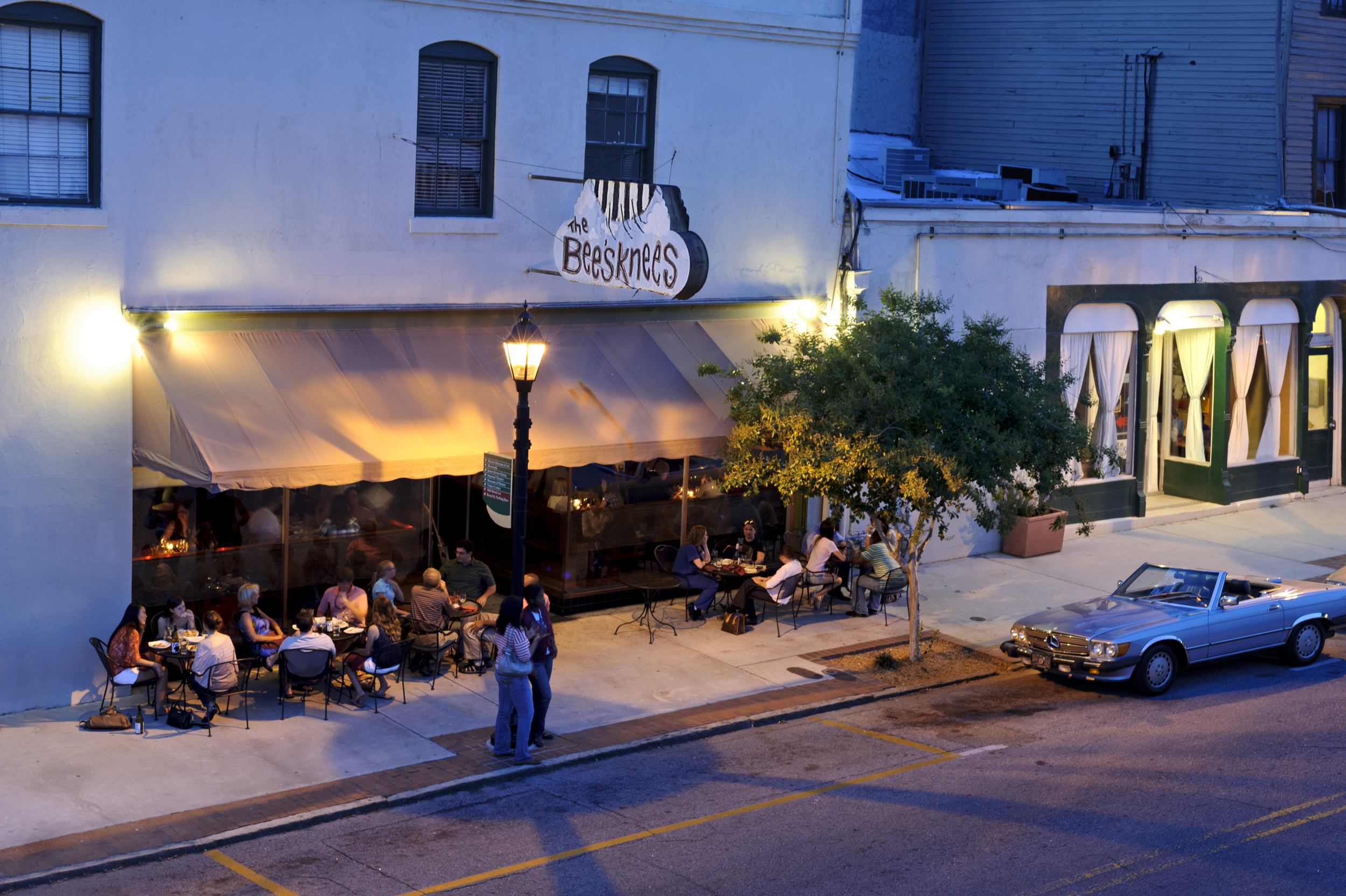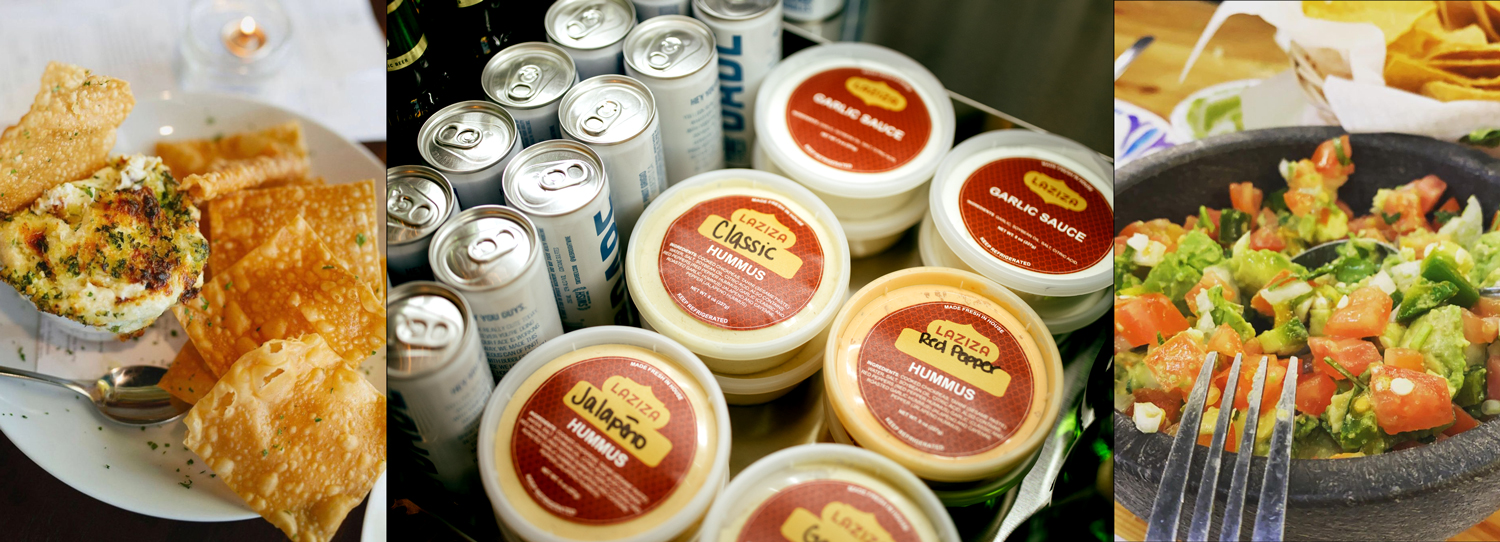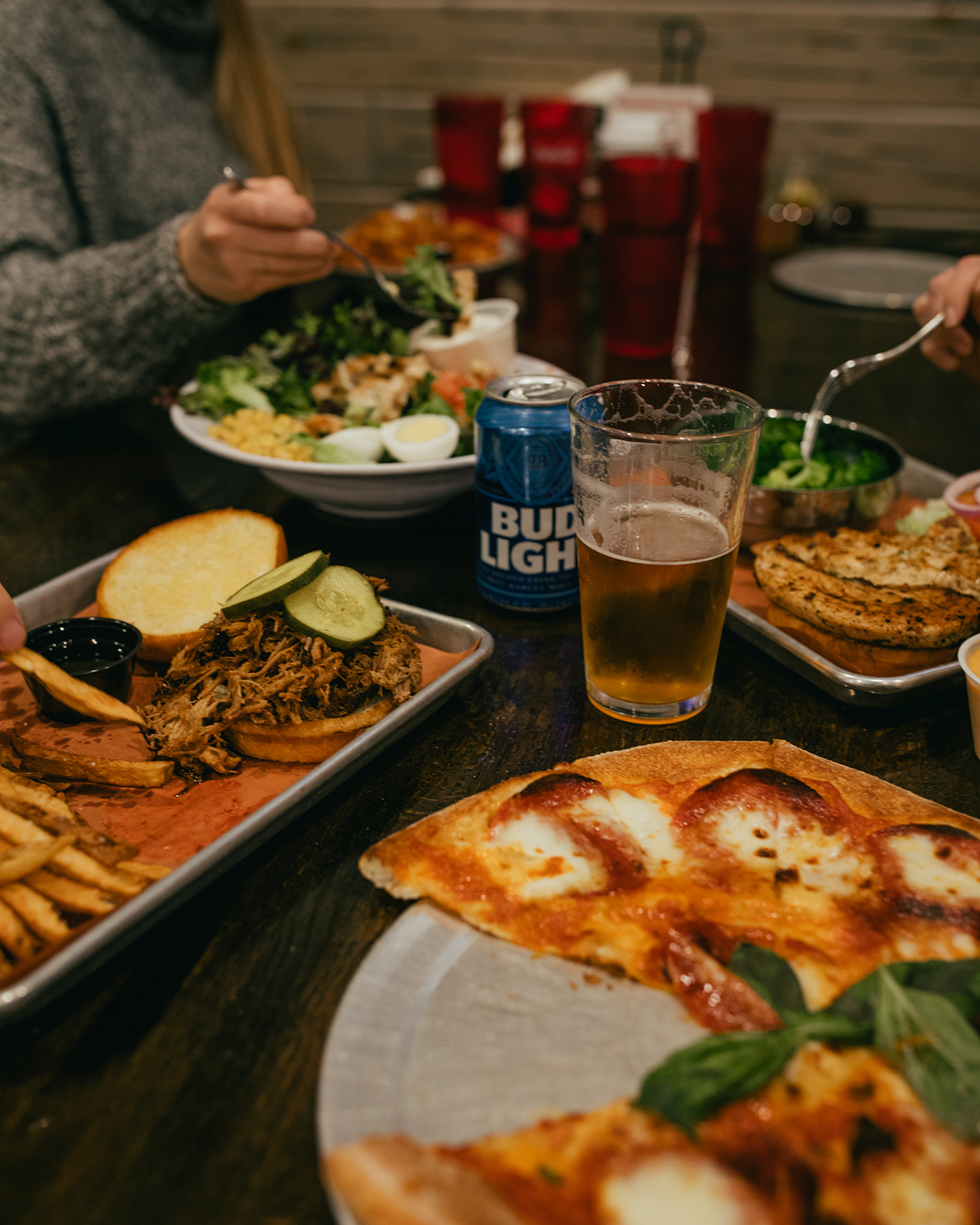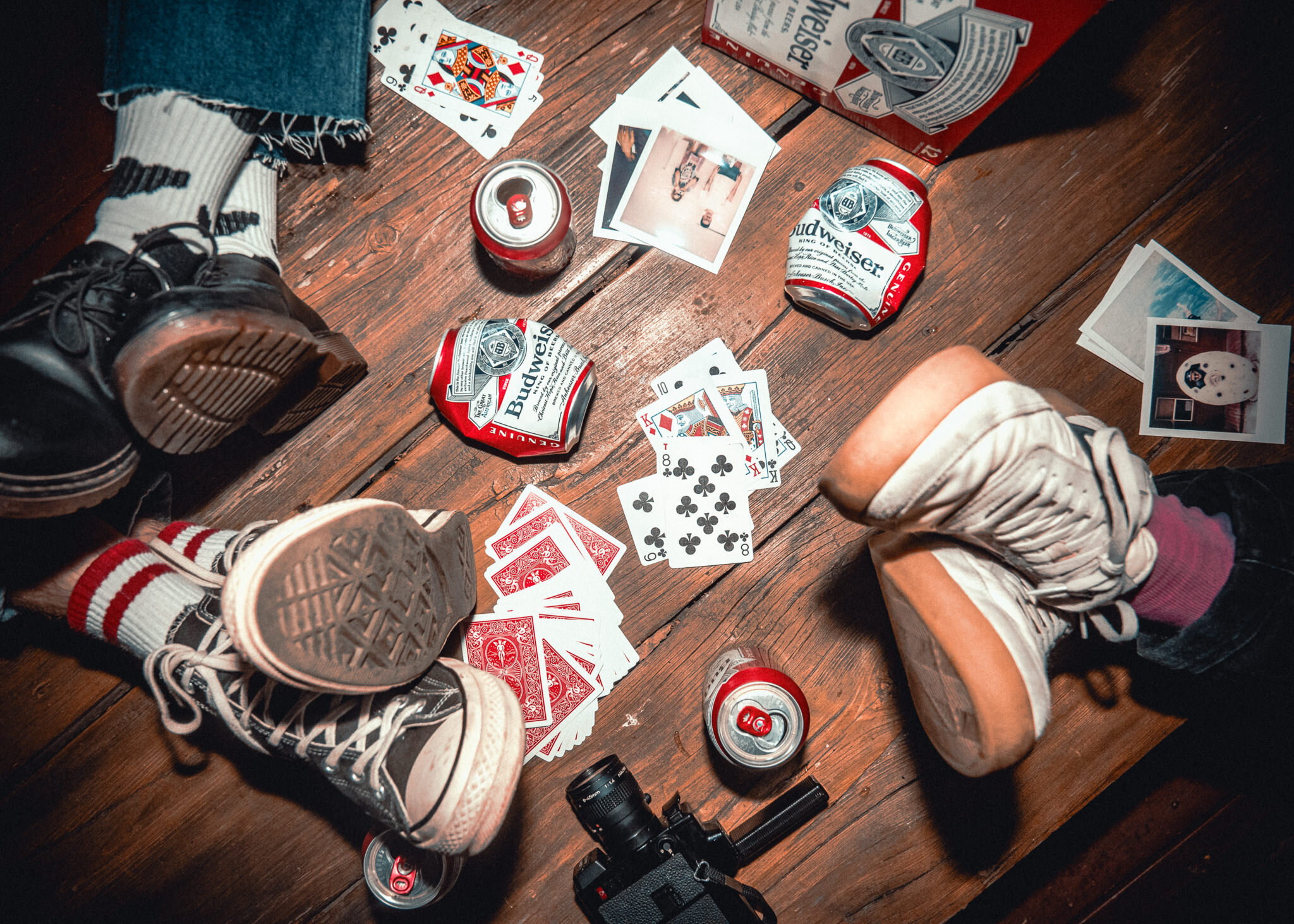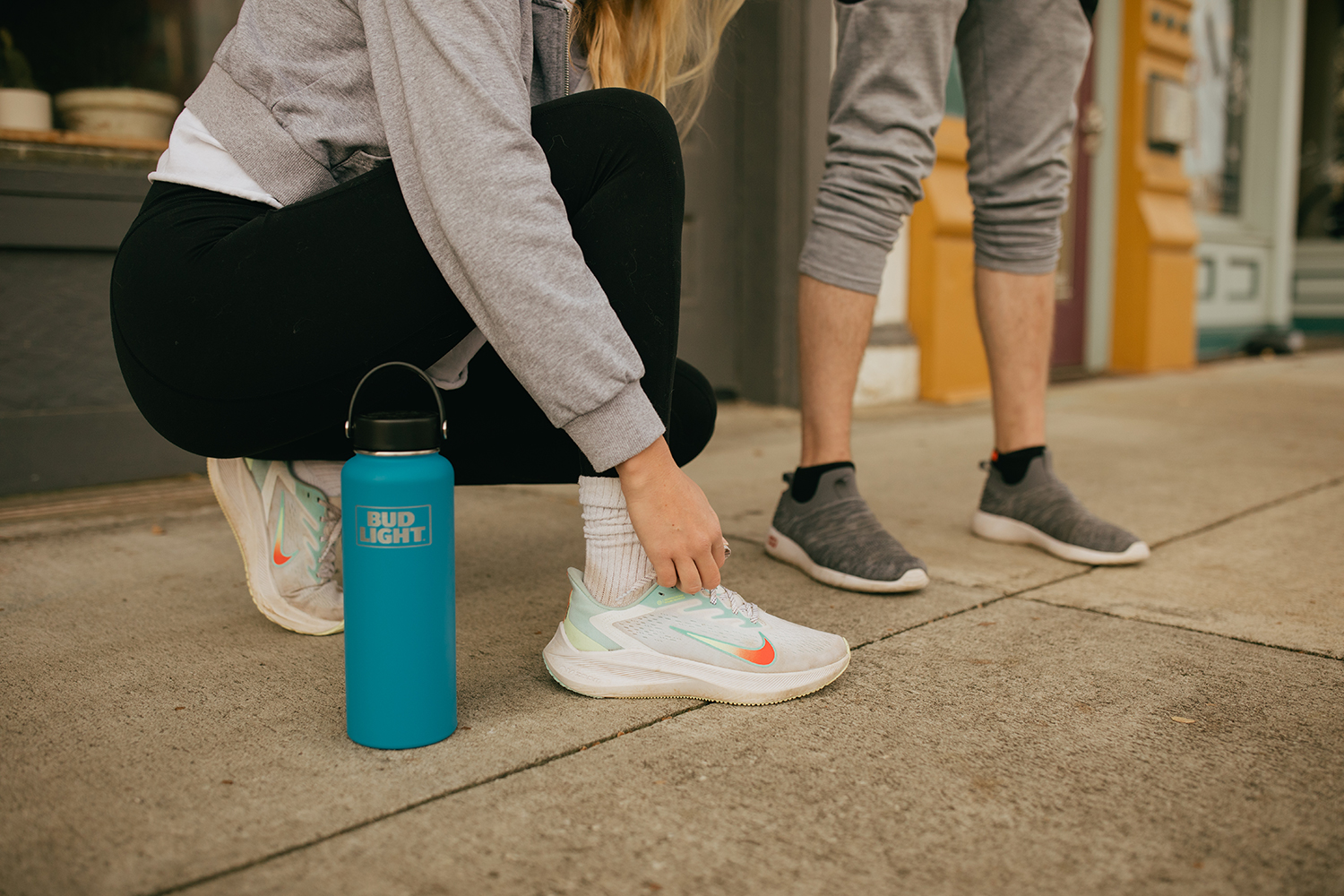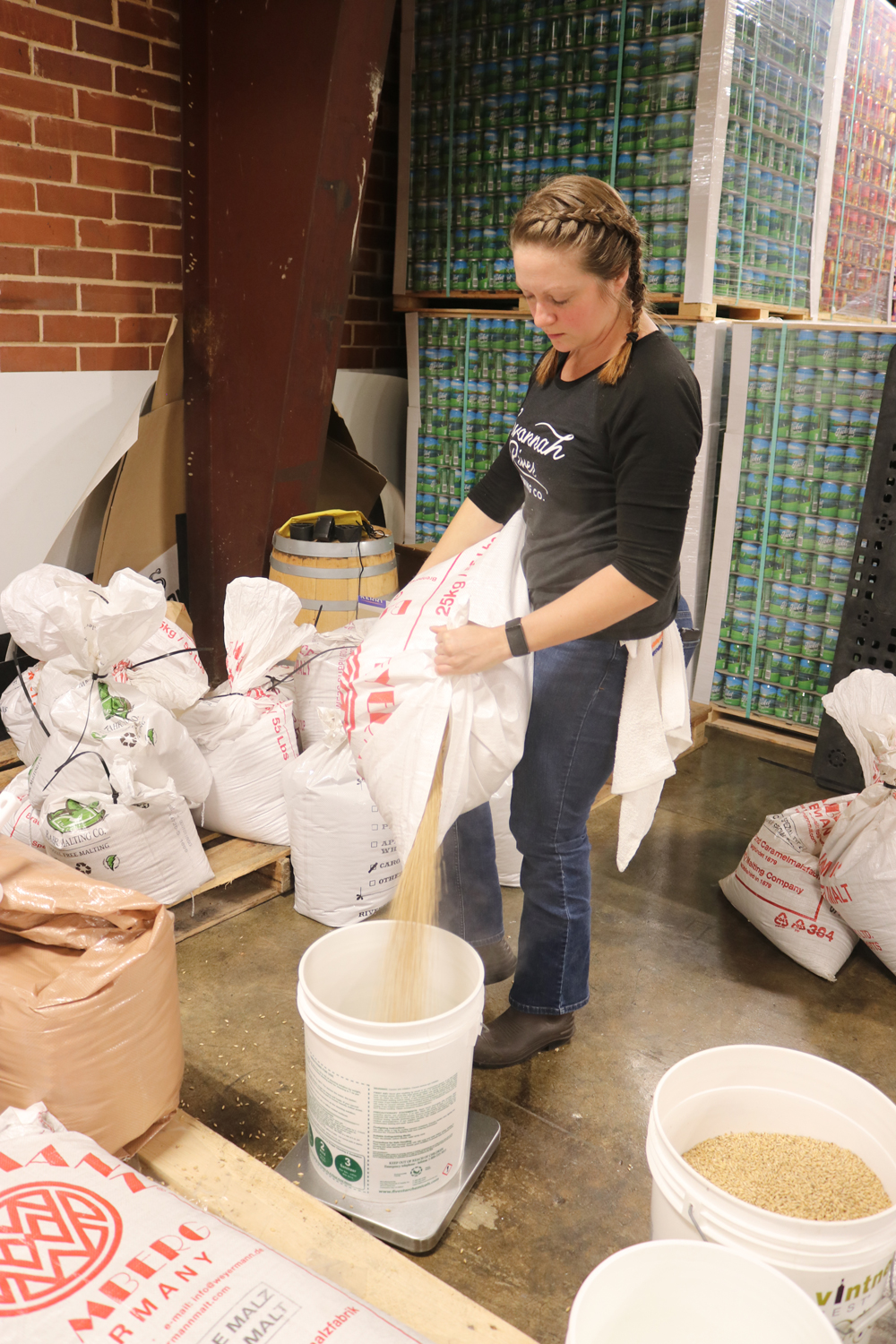
The Craft Behind Craft Beer
By
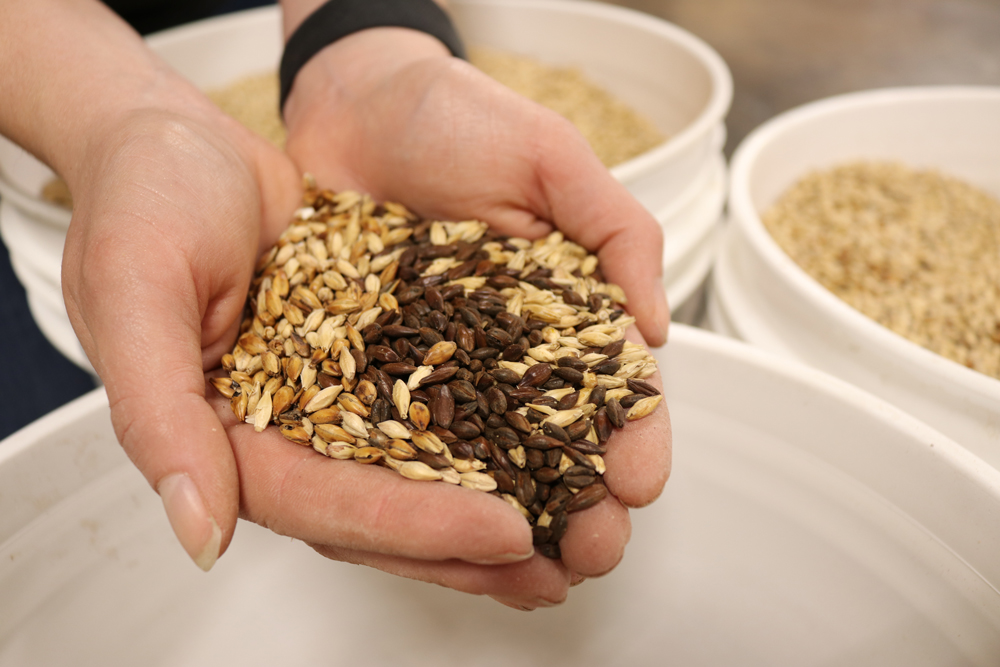
SRBC is always coming up with new and exciting beers. Their flagship beers are staples in my fridge. All of them are smooth, easy drinking beers with enough complexity to keep things interesting and enough variety to provide something for everyone. On the light end of the beer spectrum you’ll find the No Jacket Required Pilsner. It’s smooth and light and one of my favorite things to drink out on the river in the summer. With a little more complexity you’ll get the Wolf Dog Witbier – a Belgian style wheat beer. Even further into the world of craft beer you’ll find two different IPAs: the Savannah River IPA and Blanc-y Kong Vol 2. If you show up for the ales, give the combustible Dynamite Brown Ale a try; its classic, roasty flavor hits the spot every time. Phinizy Swamp Thing is a beautiful blackberry and guava beer with just the right amount of tartness.
My absolute favorite part about having a local brewery is all of the experimental and small batch beers that they try. Because the quantities are so small they aren’t usually canned so you can’t find them in a store. They are exclusive to the brewery, which means you have to actually go into Savannah River Brewing Co. to try them, which is never a problem for me as the space is gorgeous and always full of amazing people (and dogs!). Each one is interesting and creative and better than the last and each one is essentially limited edition so when they’re out, they’re out. Members of the Stein Club get to try new releases on Tuesdays – a day early – and then they’re released to the public on Wednesdays.
I picked the Smoked Cherry Porter to follow honestly because I love porters and smoked beers in general. If for some reason you miss this one, there will always be more exciting beers on tap behind the bar at SRBC. But if you have time this week I highly recommend following along for the backstory on this beer and showing up on Wednesday, March 10 to give it a try, or a day early if you’re a member of the Stein Club!

Lesson 1: The History of Smoked Beers
The concept of brewing a smoked porter is a fun one because it takes us all the way back to the 17-1800s when porters were first brewed. Though variations of beer have been brewed for millennia, all porter roads appear to lead back to a brewer in London who created what he called the “Entire”, a blend of three different beers – beer, ale, and strong beer (think a Black and Tan except with 3 beers instead of 2). Nowadays the grains used to make the malts for each of those 3 beers are combined at the beginning of the brewing process to create the beer from start to finish. Legend has it that this beer was particularly popular with the porters of London, eventually giving it its name.
As for the smoke, all beer before 1817 would have had at least a light flavor of smoke. The only way to dry out the malt would have been over a fire and therefore couldn’t be kept away from the smoke that would have inevitably imparted some flavor. The darker the beer the longer the malt would have spent over the fire and therefore the more roasted and smoky the flavor. Eventually the malt roaster was invented and allowed for the elimination of the over-the-fire process and the world forgot what a smoky beer tasted like until craft brewers started purposefully playing with the process again. “Most modern smoked beers are based off of the German Märzen or Oktoberfest styles,” says Ann Wohlstadter, one of the brewers at Savannah River Brewing Company.
Porters continued to be brewed but declined in popularity, particularly in the United States in the mid 20th century as pilsners and other light beers rose in popularity that were much faster to produce. Thankfully brewers like the team at SRBC are making sure to keep the tradition alive, investing time and resources to brew porters along with a constantly revolving variety of other small batch beers to compliment their popular flagships!
Bonus factoid: Brewers would continue to play with different combinations of roasted malts to create a variety of different porters. The darkest variety, using malt that was roasted for a very long time, was known as a “stout porter” or eventually just “stout”.


Lesson 2: The Malting Process
Adam Fulmer (Head Brewer) and Ann Wohlstadter (Assistant Brewer) are the two alchemists in charge of creating liquid gold at Savannah River Brewing Company. Ann tends to focus on creating the small batch brews, including this smoked porter. She starts by writing a recipe, deciding exactly which grains and how much of each one to use to create the desired end result. There are many different varieties that are kilned in different ways to create a long list of potential flavor combinations. Imagine a scale that goes from a light water cracker to a toasted piece of pumpernickel bread. Even the humidity used in the toasting process can effect the flavor. If the grain is “stewed” in a more humid environment, it can crystallize the sugars, creating a richer and more caramel flavor or even giving off hints of sweet, dried fruit.
Savannah River Brewing Company’s upcoming release was a fun experiment. Rather than creating a fire, the smoky flavor was controlled by timing and the use of rum soaked cherry-wood pellets in a RECTEQ grill. One of the grains used in the brewing process was smoked and then combined with the others to create a classic porter with a twist.
In this case she used the smoked malt and combined it with 5 other varieties. “Smoked malt can be very overpowering in a beer. For this beer, we wanted the base porter to shine, so we kept the smoked malt to only 3% of the total malt used,” notes Wohlstadter. “For perspective, in this recipe roasted malts accounted for roughly 9%, Crystal malts were 8%, and the rest was lightly kilned grains.”


Lesson 3: The Brewing Process
Quiz time: Can you name the 4 ingredients that are required to make beer? According to the Rheinheitsgebot, the 1516 German beer purity law, those 4 ingredients are barley (grain), water, hops, and yeast. As we learn about the process of brewing and the upcoming release of Savannah River Brewing Company’s smoked porter, we see these 4 ingredients used creatively to create a classic beer with unique nuance and flavor. The grain covered previously creates some of that flavor but it is only one quarter of the equation.
A recipe has been written and the malts have been chosen. This specific blend of grains is then cracked and mixed with warm water to create what is called “mash”. The temperature of the water activates the enzymes in the malt, turning the starches into sugars that the yeast will later eat, creating fermentation. Basically science happens. Before that can happen though the mash must cook for a while and then be separated into solids and liquids. The sugary liquid is now called “wort” and will eventually become our beer while the leftover, spent grains are then donated to be repurposed outside the brewery as cattle or pig food by farmers, to make dog treats, or added to compost. The wort is cooked some more and hops are added at various points in this process depending on the more subtle or bright, bitter or aromatic flavors that a specific beer might need.
Finally the fancy, hoppy, sugar water is cooled and added to the fermenter with the fourth and final ingredient – yeast – so that it can work its magic! The higher the alcohol percentage needed for a certain beer, the longer it may need to spend in the fermenter. The yeast is eating the sugars and converting them to alcohol and releasing carbon dioxide in the process (again, fancy science). This can take anywhere from a couple of days to a number of weeks. This smoked porter spent about 3.5 months in the fermenter, coming out at about 5.5% ABV (alcohol by volume).


Lesson 4: Tasting Beer
Believe it or not, you can learn to evaluate and taste beer based on subtle flavors, color variations, aroma, and more. A Cicerone is an expert at tasting beer (similar to a sommelier for wine) and at Savannah River Brewing Company, both Ann Wohlstadter – one of the brewers, and Jim Christian – the Taproom Manager are both Certified Cicerones®.
The smoked porter Wohlstadter has created for the brewery comes off the tap chilled, like most beers. Christian suggests holding the glass between your palms to warm it up a bit, to better taste the flavors. Porters taste best sipped at 45-55˚ F. Not only is it easier to taste the beer at this temperature but it is also a little bit easier to smell the subtle aroma of smoke. The beer is thin-bodied and lighter on the palette, not weighing heavy or super rich like a stout. That being said, because the chips used to smoke the beer had been soaked in rum, it actually gives the beer a slightly more boozy flavor despite coming in at only 5.5%.
As the beer continues to warm up a slightly fruity flavor can be detected coming from the yeast. Very light cherry notes creep in from the wood that was used to smoke the malt in the beginning stages of the brewing process. As the initial crisp carbonation wears off a bit the sweeter notes in the beer can be detected. Can you taste a bit of light milk chocolate? Perhaps a bit of coffee? There is a slight astringency and subtle smokiness that balances perfectly with the sweetness of a classic, English-style porter with a bit of cherry on the back end.
Even if you’ve never done a beer tasting before, I highly recommend you give it a try. The smoked porter at Savannah River Brewing Company, releasing this Wednesday, March 10 (Stein Club members get access March 9th!) is the perfect place to start. There are lots of subtle notes to practice trying to find in this unique small batch. And no matter how many flavors you can detect, you don’t need to be an expert to appreciate a good beer!
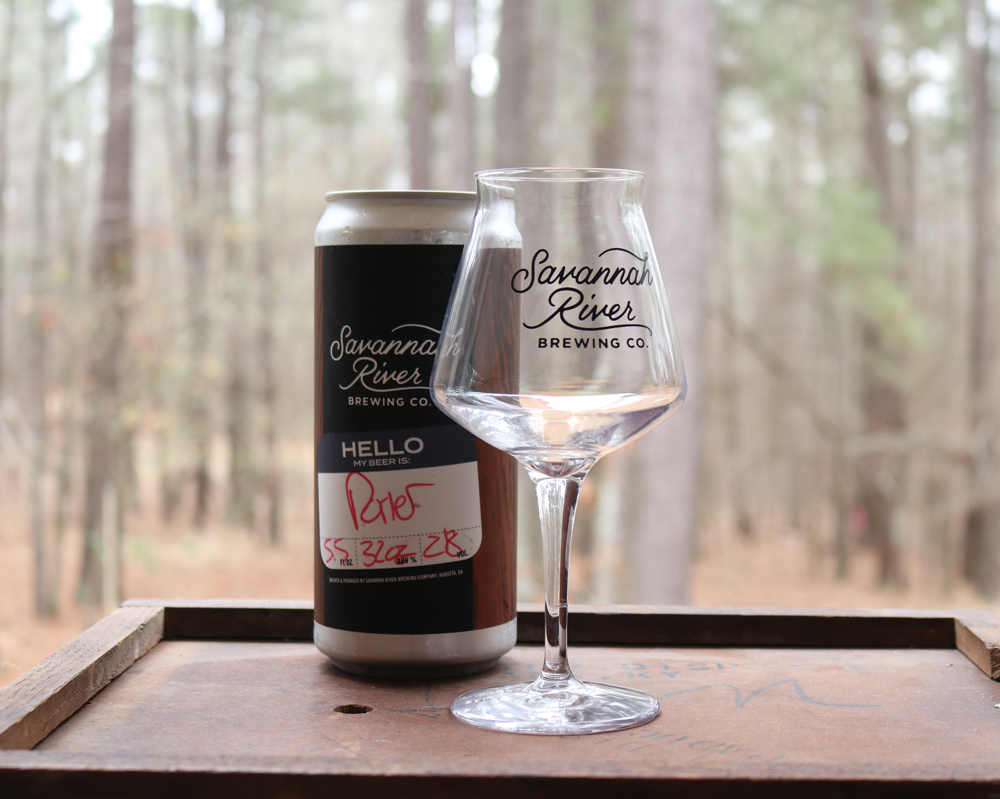
Sign up here to get your fix of the best in food/drink/fun in Augusta.
Related
Augusta’s Charcuterie Stylists
Becca Ledford and Kristin Hampson created Salt & Savannah after unintentionally making a crowd-pleasing charcuterie board for a baby shower. After some nudges from friends, they decided to start their own business.
A Love Letter To Bee’s Knees
As Augusta says goodbye to a favorite, we remember some of the thoughtful approaches that gave Bee’s Knees its charm.
6 Must-Try Dips For Super Bowl Sunday
Get these local dips to-go for your Super Bowl Sunday Smorgasbord. You’ll thank me later.
Take A Trip To Fish Eye Grill And You Won’t Regret It
Girard, GA is a small town 45 minutes outside of Augusta with one restaurant – and it’s worth the drive.
Celebrate Columbia County Restaurant Week
Swing by these 17 restaurants January 25-29, 2021 to help make a difference.
What Beer Matches Your Zodiac Sign?
After some scientific research and taste-testing, we built a comprehensive list of the beers you need to drink based on your zodiac sign.
4 Ways to Eat Local This Year
Dive into the new year and the River Region’s food scene with these resolutions.
Hit The Ground Running In 2021
You Say You Want a Resolution? Check out these local run groups. Oh, and don’t forget the food and drink that comes after!
Level Up Your Holiday With These Christmas-themed Beers
We are firm believers in doing it big on Christmas, and that same energy goes for what we drink. We rounded up some of our favorite festive beers with the perfect pairings for your holiday meals this season. You can find all the beverages listed at local liquor stores around the CSRA.
6 Festive Cocktails You Need To Try This Holiday Season
It’s time to get your holiday cheer on, Augusta! So let’s raise a glass, jingle all the way, and make things merry + bright with these cups o’ celebration, shall we?


